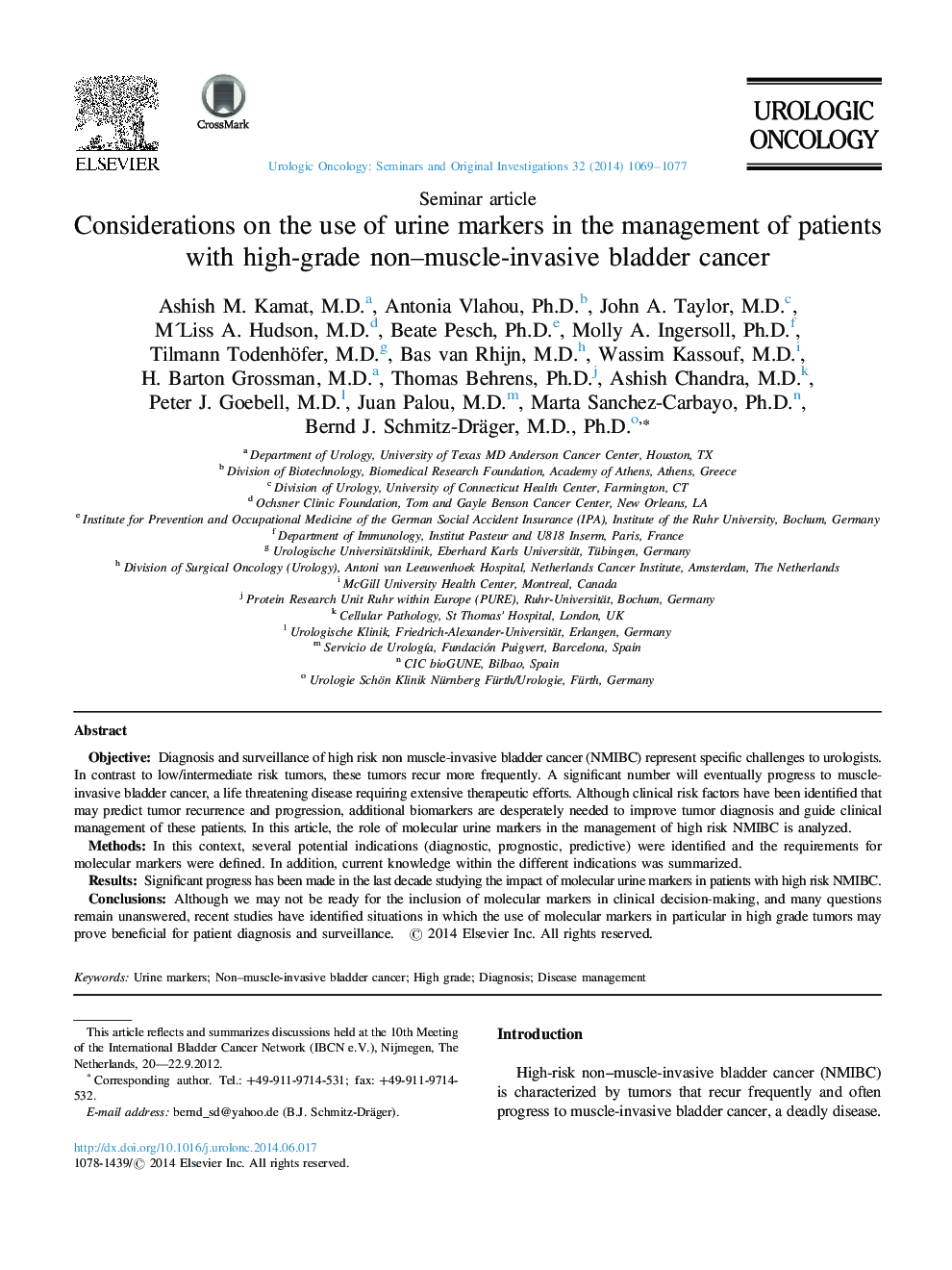| Article ID | Journal | Published Year | Pages | File Type |
|---|---|---|---|---|
| 3999826 | Urologic Oncology: Seminars and Original Investigations | 2014 | 9 Pages |
ObjectiveDiagnosis and surveillance of high risk non muscle-invasive bladder cancer (NMIBC) represent specific challenges to urologists. In contrast to low/intermediate risk tumors, these tumors recur more frequently. A significant number will eventually progress to muscle-invasive bladder cancer, a life threatening disease requiring extensive therapeutic efforts. Although clinical risk factors have been identified that may predict tumor recurrence and progression, additional biomarkers are desperately needed to improve tumor diagnosis and guide clinical management of these patients. In this article, the role of molecular urine markers in the management of high risk NMIBC is analyzed.MethodsIn this context, several potential indications (diagnostic, prognostic, predictive) were identified and the requirements for molecular markers were defined. In addition, current knowledge within the different indications was summarized.ResultsSignificant progress has been made in the last decade studying the impact of molecular urine markers in patients with high risk NMIBC.ConclusionsAlthough we may not be ready for the inclusion of molecular markers in clinical decision-making, and many questions remain unanswered, recent studies have identified situations in which the use of molecular markers in particular in high grade tumors may prove beneficial for patient diagnosis and surveillance.
